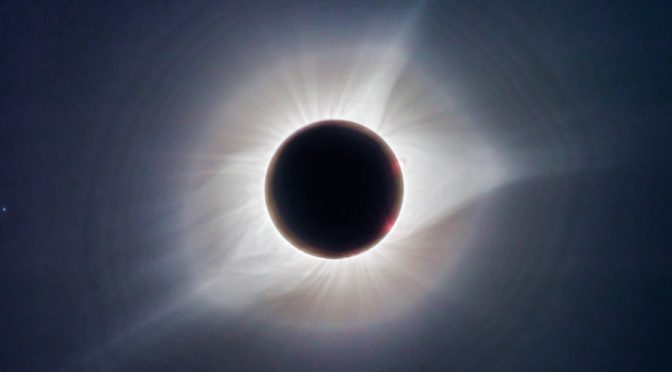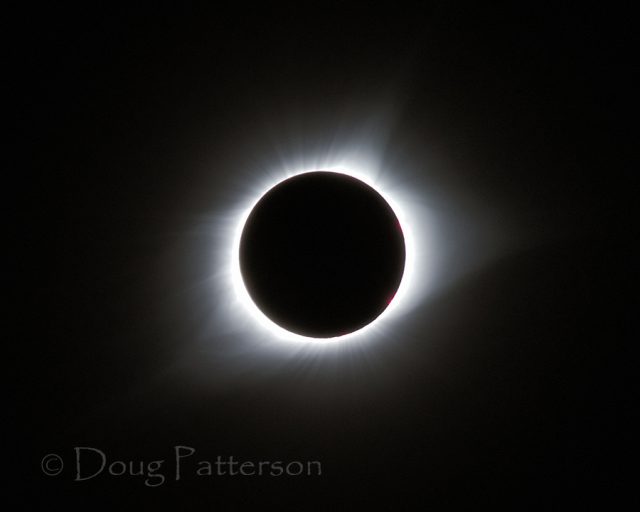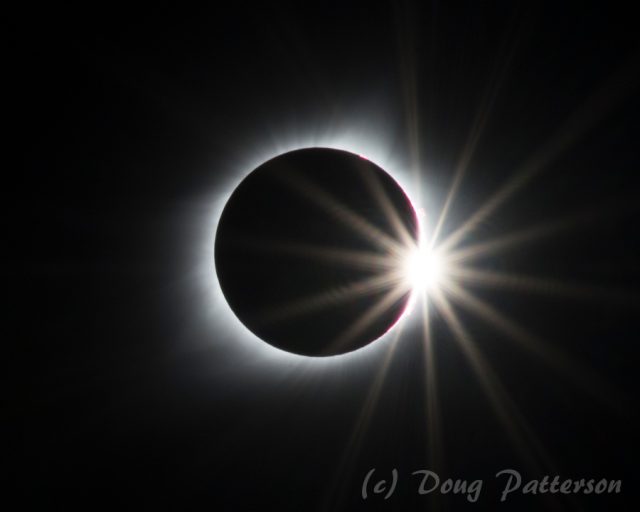Wow, wow, and triple wow! I expected the eclipse to be pretty cool, but it was absolutely mind blowing! Prof. Koch and I spoke with our Dean last spring and the three of us agreed that he and I needed to be on the path of totality in spite of that day being the first day of class. We were prepared from a gear perspective. We had an 8″ and a 12″ telescope, both fitted with white light solar filters, our new solar telescope with a built-in hydrogen-alpha filter to see prominances, and no less than six DSLRs between us with everything from a fisheye lens to a 400-mm f/4 prime lens. We hosted around 100 people including my fellow space physics researchers at Fundamental Technologies, science educator friends from Rockhurst University, racing buddies from the Sports Car Club of America (SCCA), and of course several other friends and professors and Dean Miller from JCCC.
Prof Koch and I started getting things set up pretty early, around 8am. As we looked to the southwest, though, we saw the rain coming and quickly grabbed some plastic sheeting and covered the telescopes. Thankfully, we didn’t get the torrential rains that the KC Metro received, but it did put a damper on our enthusiasm. The eclipse started a little after 11:30am, but our skies were still completely cloudy overhead. We held on to hope, though, as we could see a patch of blue sky approaching. A little bit past noon, after we had all stuffed ourselves on pulled pork, moon pies, sun chips, and enough potato salad to feed an army, the clouds broke and we had crystal clear skies. Just in time!!!
We watched the partial eclipse deepen using our various cameras, telescopes, eclipse glasses, and pinhole projectors. As the eclipse deepened, it became darker and darker. The dappled light under the trees started to appear more crescent shaped, and we all began to get excited. When totality finally came, I don’t think there was anyone who wasn’t blown away by the sight.
In the shadow of the Moon, we saw what looked like a sunset all around us on every horizon, the temperature dropped, and we saw a couple of planets and bright stars. Of course what was really spectacular was seeing the solar corona. My research focus for the past twenty years has been the solar corona and space weather, but Monday was the first time I have ever seen the object of my research with my own eyes. It was moving beyond anything I had expected.
Our location enjoyed a little over two minutes of totality, but it seemed like only two seconds. Just like that, the Sun began to peek out from around the Moon once again and back on went the filters and the glasses. We admired the partial eclipse a while longer and marveled at the rapidly brightening skies, but then we milled around, some of us packing up, some of us going back for more food. It was Leo, a friend and member of the Astronomical Society of Kansas City, that pointed out the crazy fact that there was a solar eclipse still happening right above us, but after totality, we had all gone back into our routine habits as humans.
As an avid photographer, of course I had gear set up to record the eclipse, but I didn’t let the photography of the event get in the way of my experiencing the event. I had my exposures all preplanned and the camera able to fire with a remote shutter release allowing me to image the sun while not needing to always be peering through the view finder.



